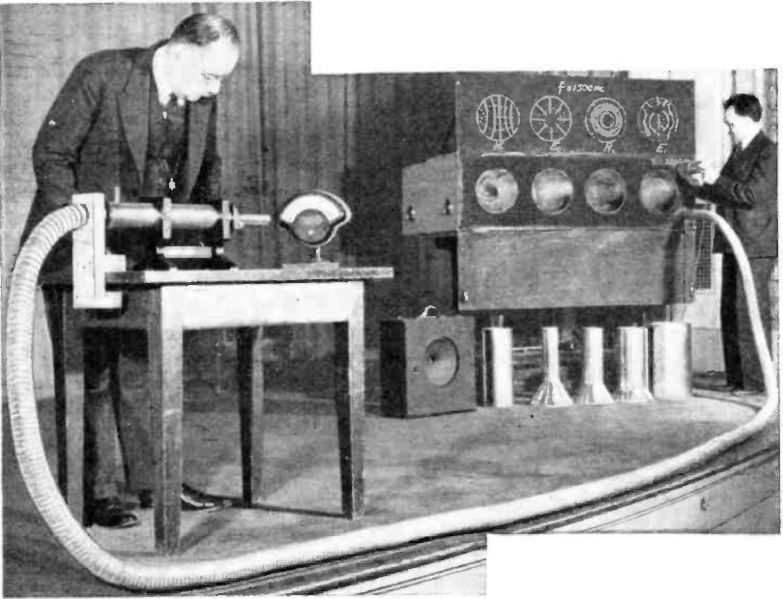Image: Southworth demonstrating waveguide

Description: Demonstration in 1938 of the waveguide before the Institute of Radio Engineers by the inventor, Bell Telephone Laboratory scientist George C. Southworth (left). Behind the blackboard (right) were several vacuum tube oscillators producing 1.5 GHz (8 inch, 20 cm) microwaves of different modes. He demonstrated that they could pass through the 25 ft flexible metal waveguide and be detected by a receiver consisting of a silicon diode coupled to an amplifier and galvanometer. He demonstrated further properties of the waves: Using a metal paddle reflector he created standing waves. Using an electric field probe he demonstrated the E field structure of the different modes. By using progressively smaller diameter pipe (seen at right on floor) he showed that waves would not propagate through a waveguide that was under a certain diameter, that is, each waveguide had a cutoff frequency. A brass grating in one orientation could block the waves but in perpendicular orientation allowed them through The propagation velocity was less than that of waves in open air. A soft rubber rod could also conduct the waves, forming a dielectric waveguide. Caption: Dr. George C. Southworth and his assistant A. E. Bowen of Bell Telephone Labs show how extremely short electric waves can be guided through a flexible metal pipe
Title: Southworth demonstrating waveguide
Credit: Retrieved March 28, 2015 from "Four inch waves turn science topsy-turvy" in Short Wave and Television magazine, Popular Book Corp., New York, Vol. 8, No. 12, April 1938, p. 669 on http://www.americanradiohistory.com
Author: Unknown authorUnknown author
Permission: This 1938 issue of Short Wave and Television magazine would have the copyright renewed in 1966. Online page scans of the Catalog of Copyright Entries, published by the US Copyright Office can be found here. Search of the Renewals for Periodicals for 1965, 1966, and 1967 show no renewal entries for Short Wave and Television. Therefore the copyright was not renewed and it is in the public domain.
Usage Terms: Public domain
License: Public domain
Attribution Required?: No
Image usage
The following page links to this image:

